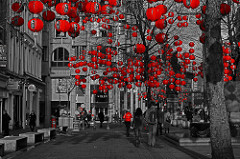Asian Cuisine Crash Course
Asian Cuisine Crash Course
Asian culture has been around far longer than any in the West. It has designed largely unknown all through ancient historical past. But now, with the proliferation of Asian immigrants and the Internet, folks are becoming aware of what the East has to offer. As with any culture, food is as interesting as any element. Read on and find out 3 Asian cuisines.
Chinese
China can boast currently being a single of the world’s biggest nations – each in geographical area and in terms of population size. Since of these elements, China is divided into distinct regions that, even though all characteristically Chinese, are also distinct in many techniques. What is equivalent across all regions, nonetheless, is the universal use of noodles or rice and a complementary dish with veggies, meat or fish. Chicken, pork, and fish are the most well-liked meats, with beef not as prevalent as in the West. Most dishes are served as bite-sized pieces so that they are easier to consume with chopsticks – no far more slicing requiring the use of knives. Chinese dishes are served family members-design, with a large communal dish wherein all diners consider from. No person portions right here.
Two areas, Canton on the mainland opposite Hong Kong and Shanghai on the northern coast, are renowned for their fresh seafood dishes partly because of their proximity to abundant waters. Authentic Chinese food, in contrast to Americanized Chinese food, is characterized by the comprehensive use of spices. The Hunan and Sichuan provinces of China are effectively identified for their use of sauces laden with modest but fiery red peppers.
Korean
The flavors of Korean cuisine is distinct from its neighbors. Korean dishes usually use red peppers, garlic, onions, ginger, mustard, sesame, and bean paste to get its trademark taste. Also, chili paste is a favorite amid Koreans with many households serving them at the dinner table. And who could overlook kimchi? It really is a side dish produced out of fermented cabbage. If there is one dish that screams Korea, it really is kimchi.
Pulgoki, a Korean way of barbecuing, has appreciated rising acceptance. A fundamental sauce of soy sauce, sesame oil, garlic, and sugar is employed to coat meat that is about to be grilled. Various ingredients are additional in accordance to region and the person cook’s preferences. Korea’s unique geography provides it entry to the Yellow Sea, the Sea of Japan and the Pacific Ocean. This wealth of coastline implies an abundance of fish – something that Korean cuisine took benefit of and produced its own.
Japanese
The Japanese have a wealthy seafaring tradition that spans hundreds of years. Because of this, Japanese chefs have elevated cooking with fish into an artwork type. Sushi is not only tasty, it’s a feat for the eyes as well. Preparation of this dish takes many years of painstaking practice. A typical Japanese meal consists of steamed rice, soup, a vegetable dish and fish prepared in a variety of ways. Exotic fare like squid, octopus, eel, clams, and sea urchins are deemed common in Japan.
Japanese foods is acknowledged for its subtle approach to taste but there are noteworthy exemptions to this rule. Wasabi is a sturdy spicy paste made from horseradish and is what gives sushi its kick. Other acquainted Japanese condiments consist of rice vinegar, mirin, miso, sake, and soy sauce. Seaweed, ginger, mushrooms and beans are utilized in a quantity of techniques and generally flavor rice dishes and soups.
Japanese chefs consider the time to make their creations search as good as they taste. Wherein Chinese cooking is content with serving everything in a single bowl, the Japanese method is characterized by personal servings. These are painstakingly organized by hand and meant to make the dish as attractive as possible.





















Leave a Reply